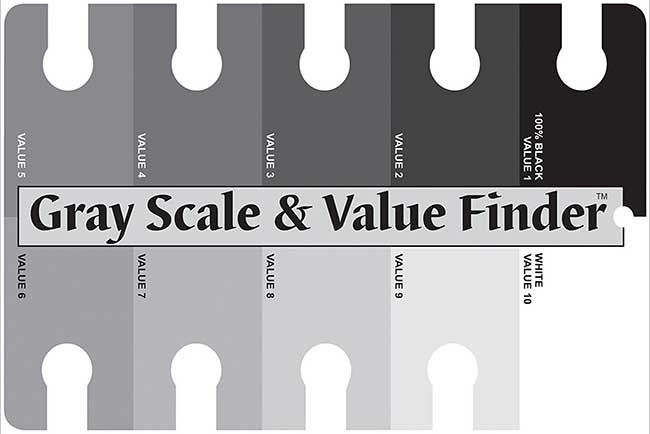 “Value” is a term used by artists to describe the amount of light or dark in a color. When a color is lighter, we say it is higher in value. When a color is darker, we say it is lower in value.
“Value” is a term used by artists to describe the amount of light or dark in a color. When a color is lighter, we say it is higher in value. When a color is darker, we say it is lower in value.
You change the value of a color by adding white or black to it. But not the kind of black that comes from a tube of, say, Ivory Black. An artists’ black is much more than that and will be the subject of a future email.
We humans we can easily make out white and black. We can also identify the middle value between white and black. In all, we can pretty much identify five degrees of value between white and black. It is the rest of those pesky values that creates the problem. That’s why we have value scales, so we don’t have to guess.
You do own a value scale, right?
We gave you a homework assignment the other day to count the colors in a green bush or the top of a tree. You’ll realize very quickly that a tree is much more than green. It contains an almost infinite number of shades of green. All those different shades of green are values. Understanding value is how artists create photorealistic paintings without turning them into photographs.
Here’s another interesting point. Pure white paint is about fifty times brighter than black paint. Sunlit objects, though, are often several hundred times brighter than those in shadow.
How does an artist represent nature’s intervals? Especially when our paint is so severely restricted?
You’re going to have to trick the eye.
Chevreul in his magnum opus on color discussed “simultaneous contrast of color.” Colors placed next to each other affect the other. They can lighten (or darken) the other. They can make you see colors that the artist did not put down on the canvas. You can now make intervals proportionate to nature’s intervals. You won’t match them exactly, but you will be close enough!
Masters of color, like Bill, could do this so easily you would miss it if you didn’t know what he was doing.
As we stated before — artists never paint what they see. (We’ll have much more to say on that in future emails.)
That’s why photo realistic paintings don’t look like photographs. That’s why masters like J. M. W. Turner, could paint such vibrant scenes. Scenes which certainly never existed.
We artists represent what we see in nature on the canvas. That’s why Bill says over and over again, “You are the Almighty Creator.”
Oh my goodness, times up and we’ve barely scratched the surface of color value, but we will!
For now, check out our “Yellow, Red, and Blue” Color Course. It’s Bill at his color mixing best. Remove color confusion by learning to paint with a limited palette. If it was good enough for the Old Masters, it’s good enough for us.
Click this link to learn more about Bill’s “Yellow, Red, and Blue” Color Course.


Leave a Reply